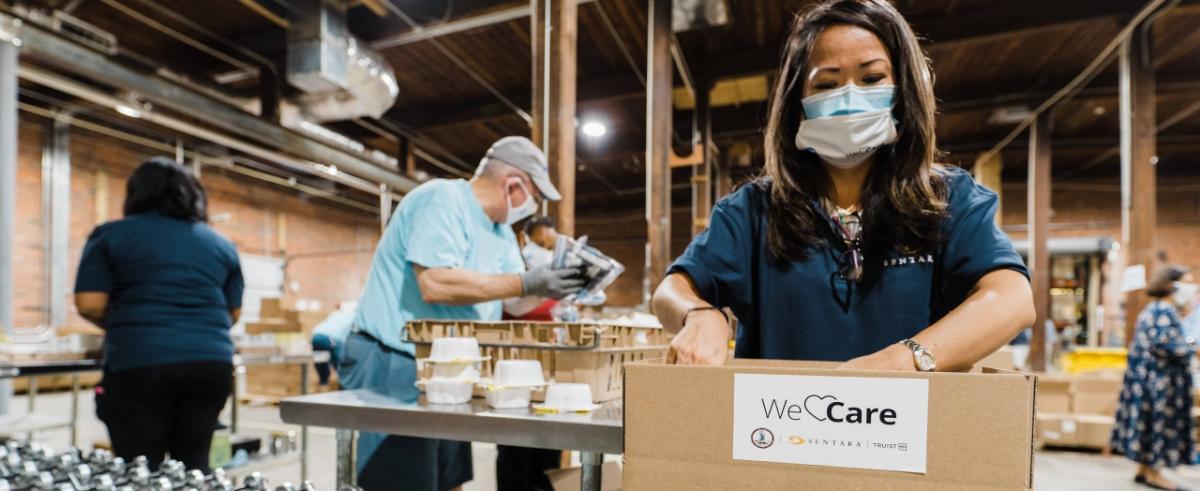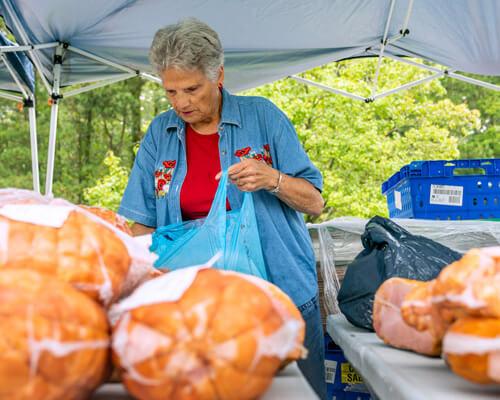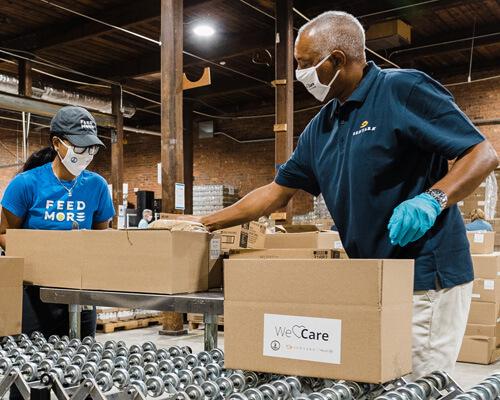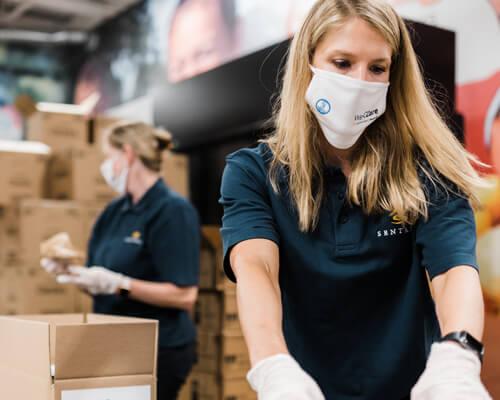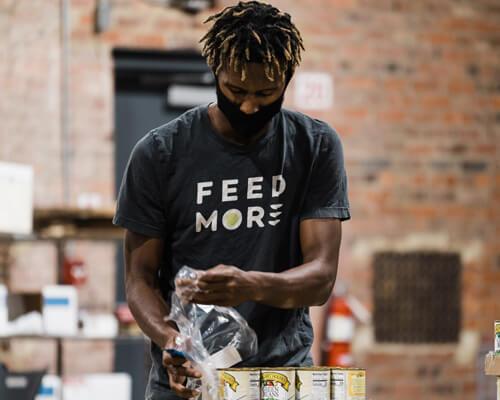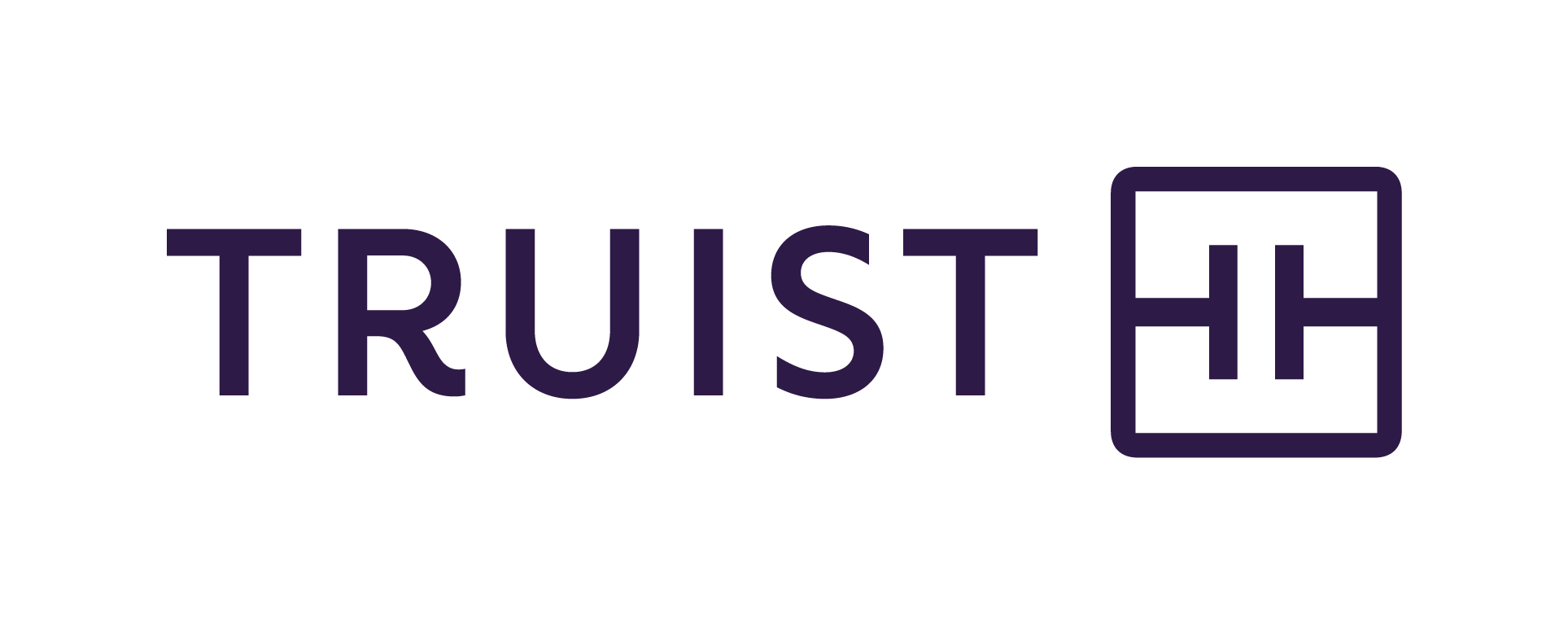1.5 Million Meals: How Virginia's Food Banks Are Feeding Families Safely
As food banks across the country struggle during the pandemic, a Truist Cares* grant has helped Virginia’s food banks meet the unprecedented demand.
Across Virginia, Feeding America predicts the number of people facing food insecurity to increase by about 50% this year due to the pandemic.
“We have seen, every week, about 30% more people coming for food assistance across our agency network,” says Eddie Oliver, executive director of the Federation of Virginia Food Banks, which is composed of seven regional Feeding America food banks across the state. “Some parts of the state, like northern Virginia, have seen 200% or 300% increases in people coming through their pantry lines.”Before COVID-19, about 1 out of every 9 Americans — more than 37 million people — were food insecure, and that number has been increasing. According to Feeding America, up to an additional 447,000 Virginians may experience food insecurity this year due to the pandemic, bringing the state’s total to 1.3 million people.
That’s far more than we have seen in recent memory of folks who have to worry about where their next meal is coming from,” says Oliver. “The Capital Area Food Bank in Lorton, Virginia, purchased 100 truckloads of food in April, which is three times more food than they had to purchase in the entire year of 2019. That just really hits home, the degree of need we’re seeing.”
Recognizing this sudden increased need, Truist Cares* and Virginia-based Sentara Healthcare donated $1 million to the Federation of Virginia Food Banks, kickstarting a project called the “We Care” COVID-19 Emergency Food Support Plan.
“It’s interesting when you look at the data — whether it’s unemployment, health, or poverty indexes — the last bastion or safety net is the ability to receive a nutritious meal,” says Mark Johnson, a vice president and community development manager with Truist in Norfolk. “COVID-19 really exposed that issue. It’s begun to widen that gap.”
Feeding the hungry -- with little to no contact
The “We Care” COVID-19 Emergency Food Support Plan seeks to help meet the food and nutrition needs of food-insecure Virginians for as long as COVID-19 exacerbates the issue. It’s also helping food banks shift the way they get food to people who need it most — instead of people coming to “shop” for their own items at the food banks, which was one of the most common food distribution methods before the pandemic, the food is now all prepackaged for low- to no-contact deliveries.
“We knew we needed to source nutritious shelf-stable items that we could prepackage, build, and ship to our mobile distributions or pantries. Then the volunteers could just hand those out, even just put them in the back of cars without people getting out,” Oliver says. “That’s why the support of partners who came to the table to help us purchase all of the shelf-stable food at once was such a game changer. It immediately met a need that we had in this unprecedented moment.”
The food banks hope to distribute 100,000 of the prepackaged food boxes — or 1.5 million meals — by the end of the year, Oliver says. Weighing about 20 pounds, each box is filled with shelf-stable foods and can provide three meals a day for five days, or 15 nutritious meals. The boxes are intended for families and individuals of all ages, from children to older adults — but when it comes to seniors, who are generally the most at-risk of having serious complications from COVID-19, the food boxes could be literal lifesavers.
"One area that we are prioritizing is the senior population, who face social isolation issues as it is,” Oliver says. “But because of quarantine requirements and social distancing, that is an accentuated problem. We’re working with other nonprofits throughout the state to help us reach those isolated seniors with these food boxes."
Shifting gears with the help of volunteers
Prepacking boxes of food is a significant shift from how the food banks used to operate and interact with their customers. The effort has meant bringing in new volunteers, which was another challenge at the start of the pandemic. Many of the food banks’ typical volunteers are part of that vulnerable older population.
“We didn’t have the regular volunteers we needed, and we had this new extra labor demand on the food banks to prebuild these boxes at a much larger scale than ever before,” Oliver says. “Corporate volunteers weren’t coming into food banks because they were all working from home and quarantining."
Luckily, Sentara and others have been able to help on the volunteer front, too. While space is limited due to pandemic safety measures, the volunteers have attended a handful of different packing events across the state.
“Not only did the financial support of our partners make the difference in helping this initiative take off, but the volunteer support that we’ve gotten to help build the boxes has made all the difference as well,” Oliver says. “We can usually knock out a few hundred [food boxes] for every volunteer shift, but each food bank’s been doing that for several weeks now, and we plan to keep those packing events going through the fall.”
Building better communities through better partnerships
The initial Truist Cares* and Sentara donation also sparked a wave of additional giving. According to Oliver, multiple corporate sponsors have joined in the effort, and the Commonwealth of Virginia itself allocated $2 million through CARES Act funding. Altogether, more than $3 million has been pledged to the project.
“It was very catalytic — additional funders joined in our cause because of that initial donation,” says Sherry Norquist, corporate social responsibility director for Sentara Healthcare. “Honestly, the national media around food banks is that the banks are desperate. They’re desperate for donations, they’re desperate because they can’t get food. They’re desperate for volunteers.
“That’s not happening in our state. And it’s largely because of the strategic planning and the proactive planning that we’re doing.”
Norquist has been working closely with Truist Cares* and the food banks to ensure the “We Care” food support plan’s success. She encourages anyone who wants to make a difference to consider filling the volunteer need — anyone wanting to get involved can search for volunteer opportunities in their local community by visiting feedingamerica.org.
“My message is to get involved in your community. Volunteering helps us generate positive energy and stay connected,” Norquist says. “Inspiration comes from helping others and being part of the solution.”
Oliver says it means the world knowing that the food banks can rely on community partners.
“When things get tough in the community for so many people, there’s nothing that really compels them, or requires them to give back, other than their sense of commitment to the communities that they’re in,” Oliver says. “And to be able to turn to folks, when there’s so much uncertainty about what’s coming for these families, how long the hardship is going to last — that reliability just means everything to nonprofits like us.”
Truist is proud to be a part of resilient communities that motivate us to build better lives every day. Seeing how our community partners have stepped up in the face of COVID-19 inspired us to form the Truist Cares* initiative, a $50 million commitment to help support youth, seniors, the workforce, small businesses, and increased connectivity. For more stories about the work our partners are doing, visit truist.com/truistcares.
*About Truist Cares: Truist Cares is a cooperative effort between Truist Financial Corporation, Truist Foundation, Inc., and Truist Charitable Fund to provide communities, organizations and individuals disaster relief and assistance during the COVID-19 crisis.
About Truist
Truist Financial Corporation is a purpose-driven financial services company committed to inspire and build better lives and communities. With 275 years of combined BB&T and SunTrust history, Truist serves approximately 12 million households with leading market share in many high-growth markets in the country. The company offers a wide range of services including retail, small business and commercial banking; asset management; capital markets; commercial real estate; corporate and institutional banking; insurance; mortgage; payments; specialized lending; and wealth management. Headquartered in Charlotte, North Carolina, Truist is the sixth-largest commercial bank in the U.S. with total assets of $504 billion as of June 30, 2020. Truist Bank, Member FDIC. Learn more at Truist.com.

